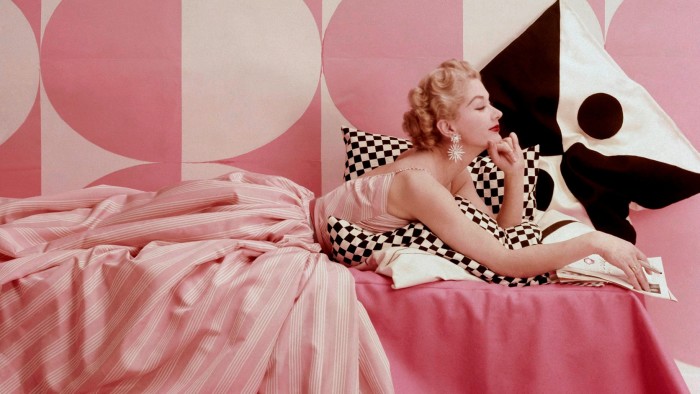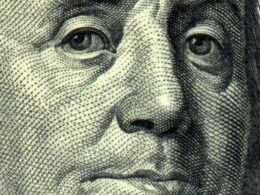In her acerbic, incendiary 1938 book Fashion Is Spinach, the American clothing designer, labour activist and writer Elizabeth Hawes joked there was a parlour game you could play “among any group of fashion people” in America: “You just said, ‘Who are the American designers?’ Then you watch everyone scurry around looking in corners to try and find them.”
Back then, the seat of clothing production was firmly in New York. In the square mile of the garment district, 5,000 firms manufactured 80 per cent of the clothes Americans wore. But the fashion — the inspiration and even the patterns — were imported from France. This was when the SS Normandie passenger ship carted so many American fashion buyers from New York to Paris and back that the liner was nicknamed the Seventh Avenue Express.
Hawes’s Fashion Is Spinach decried “the French legend” that held back America, arguing that if you don’t believe that Parisian couturiers hold all the power to dictate fashion, Parisian couturiers won’t hold all power to dictate fashion. But it wasn’t until Paris fashion houses were rendered inactive during the Nazi occupation in 1940 that American fashion disconnected from the French influence — by force, not by will — for the first time since the warring 1700s. In the vacuum, designers had the chance to consider: what could American fashion be?
There’s a new interest in this creative possibility that emerged during and after an era of danger and suppression in the 1940s. Three recent books about mid-century American fashion — Nancy MacDonell’s Empresses of Seventh Avenue: World War II, New York City, and the Birth of American Fashion; Julie Satow’s When Women Ran Fifth Avenue: Glamour and Power at the Dawn of American Fashion; and Elizabeth Evitts Dickinson’s Claire McCardell: The Designer Who Set Women Free coming in June — highlight the importance of this moment in fashion’s history. And on April 12, the Philadelphia Museum of Art will open Boom: Art and Design in the 1940s, a fashion-heavy show that casts this era as a decade-long inflection point. The 1940s is a decade, as the museum’s director of curatorial affairs Jessica Smith describes, awash in “optimism and anxiety”.

“We’ve been thinking a lot about what it means to be an American lately,” says Nancy MacDonell. “This period was when designers like Elizabeth Hawes and Claire McCardell really defined what it means to be an American designer.”
The styles that emerged from New York in the 1940s laid the foundation for American fashion ever since. The garments were casual, suited to mass production, and easy to care for. When the American fashion ideal was finally formed without Paris’s guide, the look was effortless, polished, unfussy.
“American designers excelled at casual, comfortable clothing that was flexible in terms of how and where you could wear it,” says MacDonell.
That decade, the monthly fashion magazine Harper’s Bazaar issued a challenge for a dress design that could be worn for housekeeping and a cocktail party. In 1941 Claire McCardell, a pioneer of American ready-to-wear fashion whose clothes feature prominently in the PMA show (she is also frequently cited by designer Tory Burch), created a separates line of five items that could form nine outfits — a harbinger of the capsule wardrobe. In 1943 the fashion publicist Eleanor Lambert started Press Week, later to become New York Fashion Week.
And when the war was over and trade with France resumed, inventive marketer Dorothy Shaver, who worked for Lord & Taylor department store, ignited a renewed effort to keep promoting American fashion by codifying the “American Look” campaign. Sweater sets, shirt dresses, mix-and-match separates, collared shirts under fitted skirt-suits made for women on the move; clothes that were characterised by trim fits and a self-assured and plucky attitude. Designers like Charles James, inventor of the puffer jacket, and Main Bocher both had moved from Paris to New York to escape the war and never returned. (The PMA also showcases some of Bocher’s uniform designs from the war.)
But American editors did return to Paris. “After the war, fashion [went] back to its old ways,” says Robin Givhan, the critic-at-large for The Washington Post and author of The Battle of Versailles: The Night American Fashion Stumbled into the Spotlight and Made History. “But this little window had cracked open and ready-to-wear really got a foothold.” An American style of “looseness, ease, nonchalance” emphasised in the “American Look” has continued to characterise street style decades later.
While import duties before the war made French fashion exorbitant for Americans to purchase, they often purchased designs of French patterns, licensed (or stolen) by American manufacturers. After the war, Americans returned to buying American-made French clothes. “But they now had a choice: American design or French design,” says MacDonell.


At the PMA show, a tableau directly pits French fashion against American fashion after the war. There are three Dior looks (including one made by the American department store Bergdorf Goodman) that face off six Claire McCardell designs, including a two-piece that manages to be casual, dressy and sleek. “American fashion wasn’t purely American,” says Dilys Blum, the PMA’s senior curator of costume and textiles. “They’re still trying to work out what was going on.”
All this American vision and American chutzpah of the 1940s paved a path for the first class of known American fashion designers, like Bill Blass, who served in the Army during the war, and Anne Klein, who hired Blass as her assistant when he returned. Before the 1940s, American fashion designers worked anonymously, their outfits often just credited to the department store that sold them. Now American fashion designers have enough household names to rival the French. Or perhaps, as Givhan points out, with examples like the American Rick Owens only ever showing in Paris, the Texan-born Daniel Roseberry running Italian-owned Schiaparelli in Paris, and the Americans Jack McCollough and Lazaro Hernandez (of Proenza Schouler) running the Spanish Loewe, the conclusion is that fashion is so global that Americanness is irrelevant.
It’s likely that mid-century American fashion’s ascendance was inevitable. The country increasingly dominated the global economic market share; in New York, the marketing and advertising industries perfected themselves to sell anything.
But with the Parisian influence halting so instantaneously in 1940, there was a precipitous quality to this moment that changed fashion forever. The American looks of the 1940s are assured, bold, confident, take-charge. They have, what the writer Hawes imagined in 1938 as “the right clothes for your life in your epoch, uncompromisingly”.
Boom runs at the Philadelphia Museum of Art until September 1. philamuseum.org
Follow us on Instagram and sign up for Fashion Matters, your weekly newsletter about the fashion industry









